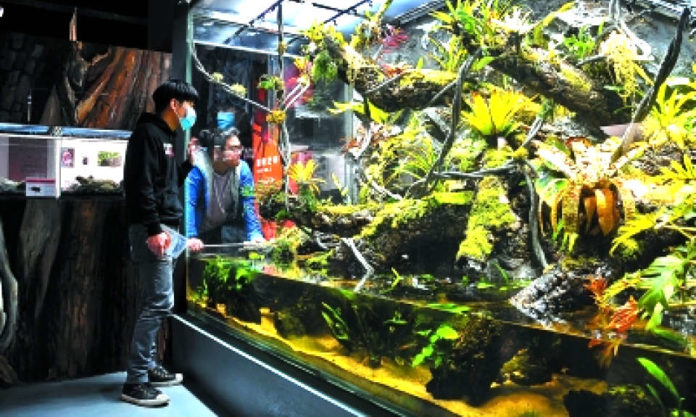Giant centipedes, killer caterpillars, blood-sucking tsete flies, venomous harvester ants and yes, killer bees, could be among the exhibits at the Nanjing Purple Mountain Insect Museum, setting out to answer the why, where, when and how of our invertebrate friends.
Completed last week on 2 April, Nanjing Zijinshan (Purple Mountain) Insect Museum features seven different exhibition halls spread over an indoor area of 1,600 square metres.
The museum shall integrate insect taxonomy research and specimen collection and will seek also to popularise the science behind insects.
For example, visitors to the museum may have the chance to learn all about the most venomous insect in the world, the Maricopa harvester ant. The deadly insect can kill a human with 350 stings; given that they would likely attack in a swarm, death would be quick. The Maricopa is found mainly in Arizona, USA, and other desert areas.
- Zoo Location has Citizens Up in Arms over Threat from Virus
- My Smelly Memories; Nanjing Museum Exhibits the Persuasive Sense
- In Perspective; Sifang Art Museum
Even more scary might be the Asian giant hornet. In China, 41 people died and in excess of 1,600 were injured by a series of hornet attacks in 2013. With its 6 mm stinger, this fearsome insect injects venom that is powerful enough to dissolve human tissue.
While hornets appear similar to wasps, bees on the other hand, are more fuzzy. The killer variety, meanwhile, starred alongside Michael Caine in The Swarm, one of the best known disaster movies of the 1970s. The film correctly portrays the fact that Africanised bees (a.k.a. killer bees) attack in vastly greater numbers than regular bees, although their venom is no stronger. The trailer for the movie is today considered a cult classic.
Finally, the Nanjing Insect Museum may also offer a chance for visitors to meet the Tsete fly. Responsible for transmitting Human African trypanosomiasis in sub-Saharan countries, the tsete sucks human blood like mosquitos, but does it with tiny serrations that saw through the skin. With the odd name of sleeping sickness, without treatment, the disease is considered fatal.
- T Rex Fossil Discovery Underscores Celebrating Museum in Nanjing
- Former Dutch Embassy Reopens as Nanjing Republican Map Museum
- Six Dynasties Museum Reveals Roman Empire Comparisons
Insect museums are needless to say, pretty uncommon. Perhaps the best known is in Japan, in Gifu Prefecture. The Nawa Insect Research Centre was established as long ago as 1896 and features a collection of more than 300,000 specimens.
Much more recently, the Tnau Insect Museum, in the south Indian state of Tamil Nadu, was opened in 2017 and showcases the rich diversity of insects from all over India.
Nanjing Zijinshan (Purple Mountain) Insect Museum, as its name suggests, is located at the foot of Purple Mountain. The Nanjing Daily has reported that the museum will be opened to the public in the near future. At that point, it shall become only the second such museum in mainland China. The other is in Xi’an, capital of Shanxi Province.









